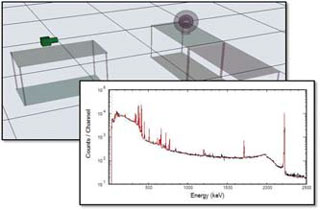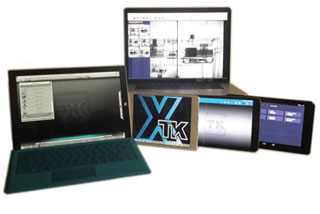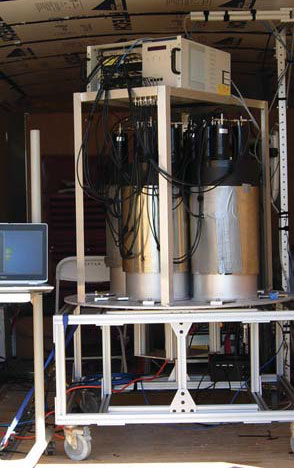
Sandia’s Protective Force has been the benchmark for leading the way with Active Shooter Response capabilities. In line with DOE’s emphasis on preparedness vs. active shooters and other emerging threats, Sandia conducted multiple Active Shooter exercises in FY14 including a successful demonstration for the Security Oversight Subcommittee. These exercises integrated emergency processes and response capabilities to quickly respond and protect Sandia’s greatest resource, its people. Additionally, to provide improved protection of the workforce, Sandia’s California Protective Force implemented improvements to bring their Active Shooter response program in line with the majority of DOE laboratories. (4200) IMS [LF]

The Gamma Detector Response and Analysis Software (GADRAS) was modified to compute gamma-ray spectra from 3-D representations of radiation sources using analytic functions that execute several orders of magnitude faster than previous methods. The external environment is treated as an extension of a detector response function, which eliminates errors encountered when radiation transport codes interface with non-integrated detector response functions. The computational accuracy for numerous benchmark measurements is excellent. Hundreds of staff members at the national laboratories use GADRAS for predictive modeling and analysis. (6600) IHNS [RGND]

The Emergency Response Application Team developed X-ray Toolkit, an X-ray image processing and analysis application. XTK improves bomb technician safety by increasing operational efficiency, reducing event resolution time, and reducing time spent near the device. XTK, first developed for DOE, is now, with more than 5,000 users, the most widely used X-ray application for US military and civilian bomb squads. The FBI Hazardous Device School (HDS) now requires XTK proficiency for bomb technician certification. XTK is available on multiple platforms, including Windows XP/Vista/7/8, Android, iOS, and OSX. (6500, 6600, 9500) IHNS [RGND]

We have demonstrated the passive detection of a neutron source equivalent to a significant quantity of weapons-grade plutonium at a standoff distance of 100 meters using a novel detection system. This breakthrough relies on two innovations: neutron-sensitive scintillator detectors larger than 25 liters that maintain high detection and identification efficiency; and a technique to encode information about a source’s direction via time modulation. This is a first with a deployable system, establishing this Sandia technology as a useful tool for countering nuclear terrorism and smuggling. IHNS [RGND]